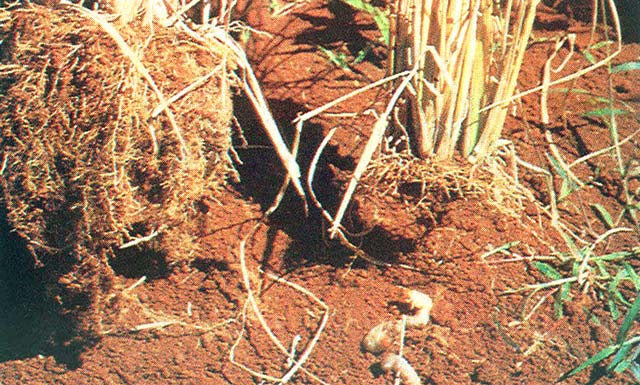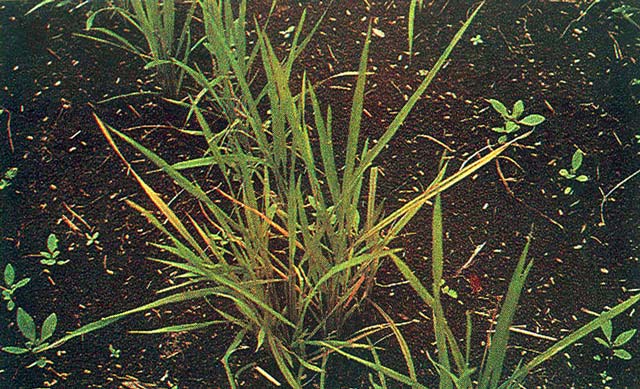Root grub
 Root loss and larvae of root grubLeucopholis irrorata Chevrolat
Root loss and larvae of root grubLeucopholis irrorata Chevrolat
What it does
Root grubs feed on roots or loss roots. This can lead to abnormal plant height, discoloration of plant, and wilting.
Why and where it occurs
Root grubs generally prefer plants with fibrous root system.
They are widespread in upland and rainfed rice environments. The adults are nocturnal and are attracted to light traps. Eggs are laid and developed in moist soil made by the burrowing females. In the soil, they usually remain close to where moisture is available.
Root grubs feed on rice during the seedling stage of the crop. During drought, damage caused by the insect pest is higher.
How to identify
 A root grub-damaged plant has yellow orange leavesCheck the field for wilting plants, stunted plants, and root loss. Orange-yellow discoloration in the leaves also occurs.
A root grub-damaged plant has yellow orange leavesCheck the field for wilting plants, stunted plants, and root loss. Orange-yellow discoloration in the leaves also occurs.
Other insect pests such as mealybugs and root aphids also cause plant stunting. The orange-yellow leaf symptom is similar in appearance to nutrient deficiency.
To confirm root grub damage, check for presence of insect pest:
- ovoid and creamy white eggs
- adults feeding on the leaves
- grubs or larvae feeding on the roots
Inspect the rice crop for damages such as damaged roots, abnormal height, and yellowish color of plants.
Why is it important
White grubs are minor insect pests of rice and usually in upland rice. Both the adults and larvae feed on the leaves and roots, respectively.
How to manage
The population of root grubs is generally controlled by natural biological control agents. Scoliid wasps parasitize the larvae. Carabid beetles, birds, toads, bats, and storks also eat the larvae and adults. The larvae are also infected by fungal pathogens.